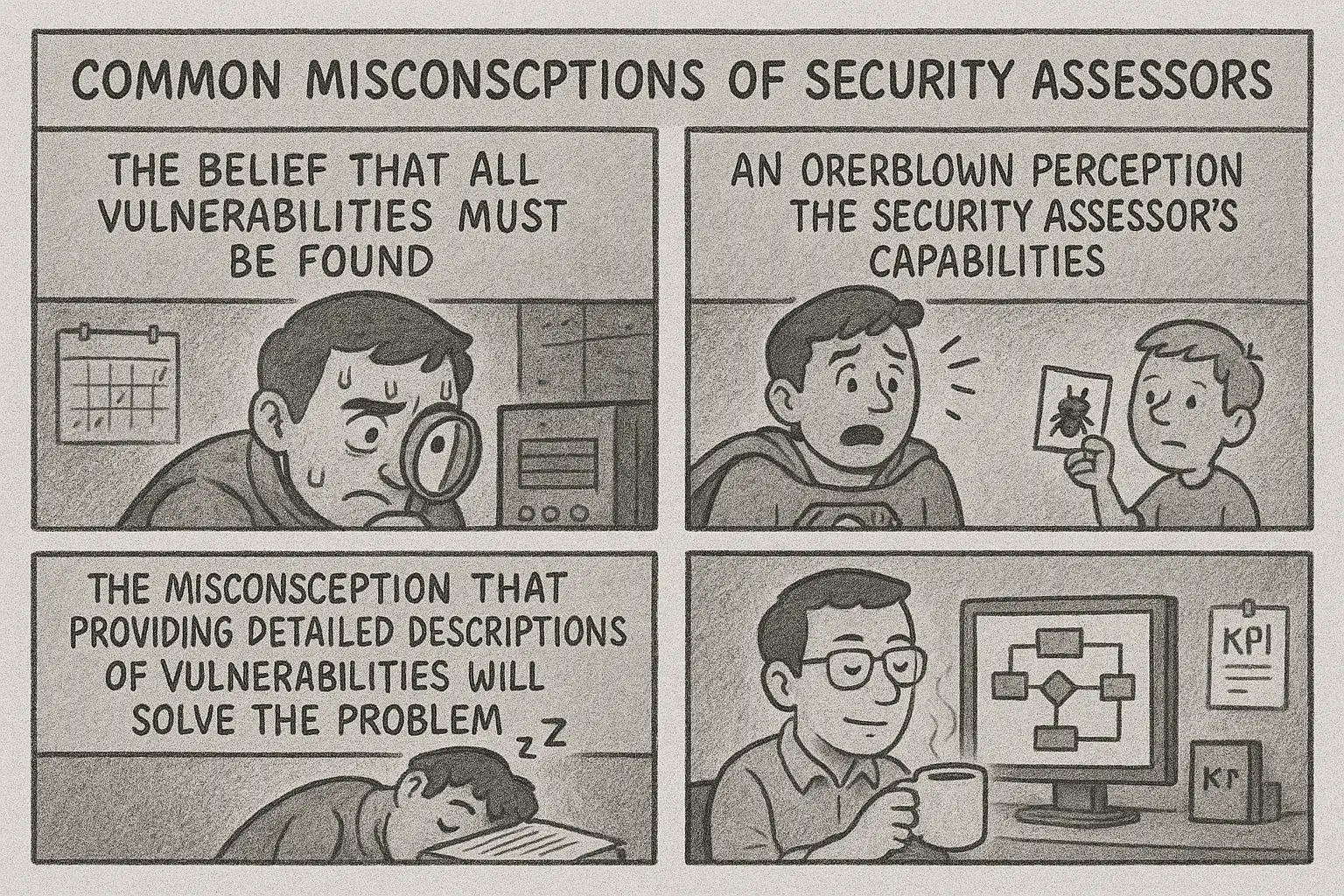Common Misconceptions of Security Assessors

Inefficient Vulnerability Evaluation Structure and Response Methods
Introduction
As the cybersecurity landscape constantly evolves, vulnerability assessment has become a critical defense against potential security breaches. However, due to common misconceptions, the effectiveness of these evaluations often diminishes. In this article, we will explore the common misconceptions about security vulnerability assessments and suggest effective strategies to overcome these issues, ultimately supporting the improvement of organizational security levels.
Common Misconceptions About Security Vulnerability Assessments
1. The Belief That All Vulnerabilities Must Be Found
Among security vulnerability assessors, there is a widespread belief that all vulnerabilities must be identified. This reflects a failure to understand the limitations of human assessors. According to a study by Tyma et al. (2019)[1], despite extensive efforts, only a few vulnerabilities were discovered.
Additionally, there are instances where outsiders who analyze vulnerabilities without the company’s approval are met with an exclusionary attitude. These limited perceptions can lead to frustration and dissatisfaction among assessors.
2. An Overblown Perception of the Security Assessor’s Capabilities
Security assessors often mistake the idea that they must find every vulnerability and tend to become upset when vulnerabilities they did not discover are reported. To overcome this, it’s crucial to recognize the limitations of security assessors and actively use external resources (such as external experts and bug bounty programs)[2] to manage vulnerabilities systematically.
3. The Misconception That Providing Detailed Descriptions of Vulnerabilities Will Solve the Problem
Many believe that providing developers with detailed information about vulnerabilities will completely resolve security issues. However, as seen in the OWASP Top 10[3], even with detailed understanding, basic security issues continue to arise. This is a structural problem that cannot be solved by vulnerability information alone.
Strategies for Effective Vulnerability Assessment
1. Designing a Repeatable Structure
Assessment methods that rely solely on the experience or skills of assessors lack consistency and objectivity. A tool-based approach, systematic checklists, and the introduction of automated analysis should be used o create a repeatable evaluation structure.
2. Actively Using External Resources
Bug bounty programs, external expert groups, and voluntary reports from the community should be actively integrated into security organizations to supplement the limitations of existing approaches.(Shostack, 2014)[4]
3. Improving Organizational Structure and Changing Perceptions
Cultural shifts are necessary to overcome KPI-driven mindsets, performance-based evaluation systems, and negative perceptions about vulnerability reporting. Evaluators should be seen as problem solvers who guide improvements rather than just identifying issues.(Ferrante & Canali, 2012)[5].
Conclusion
Security vulnerability assessment is not merely about finding vulnerabilities but is a process to systematically improve an organization’s security level. Misconceptions and inefficient structures can undermine the effectiveness of evaluations, and overcoming these requires a repeatable structure, active use of external resources, and a shift in organizational perception.
It is time for us to reflect on how much we have built security performance on flawed metrics.
Works Cited
- Tyma, G. et al. (2019). “Limitations of Human Vulnerability Assessors: A Comparative Study.” Proceedings of the 34th Annual Computer Security Applications Conference.
- Whitman, M. E., & Mattord, H. J. (2016). Principles of Information Security. Cengage Learning.
- OWASP. (2021). “OWASP Top 10.” The Open Web Application Security Project.
- Shostack, A. (2014). Threat Modeling: Designing for Security. Wiley.
- Ferrante, A., & Canali, C. (2012). “A Systematic Approach to the Assessment of Security Vulnerabilities.” Journal of Information Security and Applications, 17(6), 318-329.